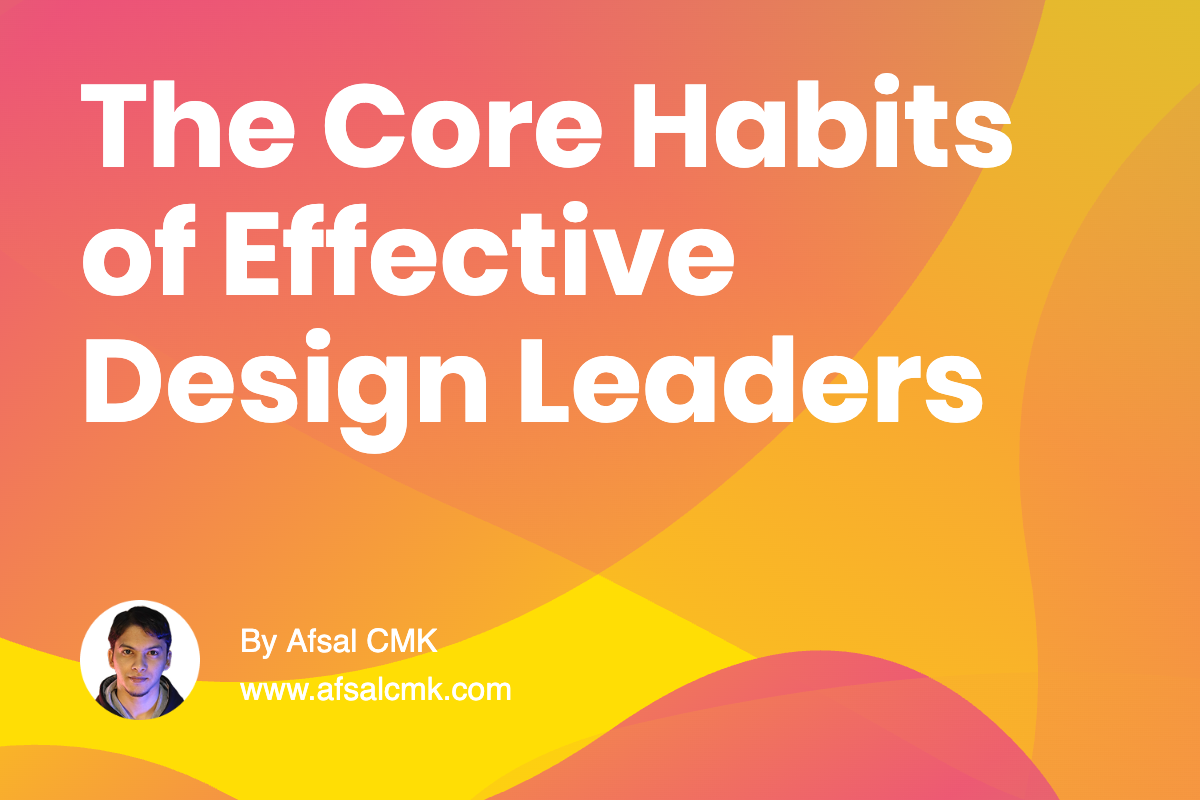
The Core Habits of Effective Design Leaders
Design leadership is more than managing a team or delivering on deadlines. It’s about building the right culture, enabling creativity within structure, and shaping how design connects to the larger goals of the organization. Over time, I’ve learned that strong leadership comes from balance - between vision and reality, between inspiration and accountability. Here are eight areas I believe every design leader should focus on.
1. Clarity of Vision
A team without a clear direction tends to overthink, overwork, and under-deliver. A leader’s job is to set the vision - not just what to design, but why it matters. A strong vision gives every decision a north star. When designers understand purpose, creativity flows with intent rather than chaos.
2. Craft and Quality
Leadership doesn’t mean stepping away from design craft; it means protecting its integrity. Leaders should help define what quality means for their team and ensure time, tools, and focus to maintain it. The goal is not perfection, but raising the collective standard of execution and attention to detail.
3. Empowerment Over Control
Good leaders don’t micromanage. They build trust. Empowerment means giving designers the space to explore and fail safely while knowing there’s guidance when needed. The more ownership a designer feels, the stronger their sense of accountability and creativity becomes.
4. Collaboration and Cross-Function Alignment
Design doesn’t operate in isolation. Building strong relationships with product managers, engineers, and stakeholders ensures design has influence beyond visuals. The leader’s role is to translate design intent into language others understand - connecting empathy with impact.
5. Feedback and Growth
Feedback is not criticism; it’s direction. A healthy feedback culture encourages reflection, not defensiveness. Leaders should give feedback frequently, frame it around outcomes, and be open to receiving it as well. The best teams grow together, not one at the expense of another.
6. Mentorship and Career Development
Every designer on a team should feel like they’re growing - not just in skill, but in confidence. Leadership is about spotting potential, shaping opportunity, and helping people find their path. Mentorship creates loyalty, resilience, and a design culture that sustains itself.
7. Process That Respects Creativity
Design processes should guide, not restrict. Too much rigidity kills innovation; too little structure leads to chaos. Leaders must design processes that respect creative flow - allowing exploration, iteration, and feedback without constant disruption. A well-balanced process creates trust and predictability.
8. Influence Through Storytelling
Great design leaders don’t just present work; they tell stories. They help others see what design can achieve - how it connects to business impact, user satisfaction, and brand perception. Storytelling turns design from an execution function into a strategic partner. It’s how design earns its voice at the table.
Design leadership is an ongoing act of balance. Some days you’ll be guiding strategy; other days, coaching an individual or unblocking a sprint. But through all of it, the goal remains the same - to build a culture where creativity, clarity, and craft coexist. Leadership in design isn’t about being the best designer in the room; it’s about enabling everyone else to do their best work - with purpose, empathy, and excellence.